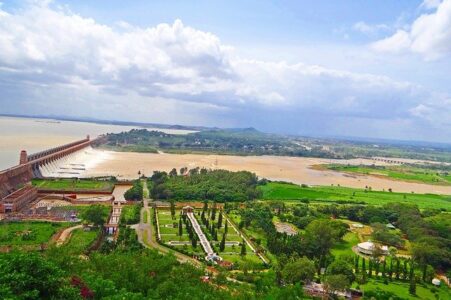Dam Safety Bill 2019
Context:
Rajya Sabha Passes The Landmark Dam Safety Bill (2019)
Highlights of the Dam Safety Bill
- The Bill provides for the surveillance, inspection, operation, and maintenance of all specified dams across the country. These are dams with height more than 15 metres, or height between 10 metres to 15 metres with certain design and structural conditions.
- It constitutes two national bodies: the National Committee on Dam Safety, whose functions include evolving policies and recommending regulations regarding dam safety standards; and the National Dam Safety Authority, whose functions include implementing policies of the National Committee, providing technical assistance to State Dam Safety Organisations (SDSOs), and resolving matters between SDSOs of states or between a SDSO and any dam owner in that state.
- It also constitutes two state bodies: State Committee on Dam Safety, and State Dam Safety Organisation. These bodies will be responsible for the surveillance, inspection, and monitoring the operation and maintenance of dams within their jurisdiction.
- Functions of the national bodies and the State Committees on Dam Safety have been provided in Schedules to the Bill. These Schedules can be amended by a government notification.
- An offence under the Bill can lead to imprisonment of up to two years, or a fine, or both.
Challenges to the Dam Safety
- India is the third largest dam owning country. There are 5,745 reservoirs in the country of which 293 are more than 100 years old. The age of 25% of dams is between 50 to 100 years and 80% are over 25 years old. 40 dams have collapsed in India since Independence and the worst such disaster occurred in Gujarat in 1979 leading to the loss of thousands of lives.
- There are a number of challenges to the dam safety and some are mainly due to the age of the dams.
- As the dams become old, their design, hydrology and everything else do not remain at par with the latest understanding and practices.
- Huge siltation is taking place as a result of which the water holding capacity of dams is getting reduced.
- The regulation of dams is entirely dependent upon individual dam managers. There is no systemisation and no actual understanding in terms of the downstream water requirement or the kind of flows that are already there.
- Dam safety is dependent upon many factors such as landscape, land use change, patterns of rainfall, structural features etc. All the factors have not been taken into account by the government in ensuring the safety of a dam.
Government’s Intentions Behind the Bill
- The government wants that there should be a uniformity of procedures which is followed by all dam owners for a particular type of large dams.
- Water is a state subject and the Bill in no way takes away the authority of the state. The Bill provides guidelines and a mechanism to ensure that the guidelines are followed.
- So far the professional efficiency of various contractors, designers and planners has never been evaluated, but they were engaged and that is the reason why India’s dams today have a design problem. The Bill provides a mechanism where accreditation of the people who are really going to take part in the construction and maintenance, has to be taken care off.
- Dams are prone to damages and therefore their safety is very important. The Bill provides for the formulation of dam safety standards.
Concerns of Dam Safety
- The governance structure on the dam safety is not logical.
- There is a Central Water Commission, under the Ministry of Jal Shakti.
- The Chairman of the Central Water Commission is ex-officio chairman of the National Committee on Dam Safety.
- The Central Water Commission gives techno-economic appraisal to almost all the dam projects.
- The authority that has given techno-economic clearance has to sit over the audit of the same project (if the project fails). It is like being a judge of one’s own cause.
- The National Dam Safety Authority will have to look after 5,000 dams across all over India, implying a huge workload.
- There is already a national committee on dam safety from last 30-32 years, which has representation of as many as 18 states. The Bill says that seven states by rotation will be represented.
Way Forward
- Since the dam safety is dependent on many external factors, the environmentalists and the environmental angle in this, needs to be taken.
- There is a need to strengthen the state irrigation department and the Central Water Commission.
- It should be ensured that the inspection of dams is done by the respective state governments.
- A preventive mechanism to avoid dam failures is necessary because if a dam fails, no amount of punishment can compensate for the loss of lives.
- With the changing climate, it has become absolutely essential to really think about the issue of water carefully and proactively.
- While considering uniformity across dams, local factors such as climate and catchment areas, need to be taken into consideration.
Source: PIB
You can find many articles on ACTS AND AMENDMENTS (part of GS II) and Infrastructure and Industry (part of GS III) in our website. Go through these articles share with your friends and post your views in comment section.


